In my column last Friday, I noted that while life around the world keeps getting better and better in most ways for most people, negative media coverage creates the opposite impression.
Polls show that most Americans mistakenly believe that poverty is rising, the middle class is vanishing, violence and terrorism are increasing, air and water quality are worsening, life expectancy is falling, and standards of living are stagnating.
None of these things is remotely true.
Yet this lack of understanding causes all sorts of negative consequences, from fear and anxiety to feelings of helplessness and depression.
It also causes investors to misconstrue the economic outlook and believe that investment opportunities are far riskier than they really are.
What is the cure for this?
A solid grounding in the facts is a good start. An understanding that “the daily news” is sensationalized and negatively biased is also helpful.
But the best piece of advice I can give you is this: Follow the trend lines not the headlines.
Sometimes a picture truly is worth a thousand words. With that in mind, here are a few relevant charts…
The number of people living under democracies is increasing.
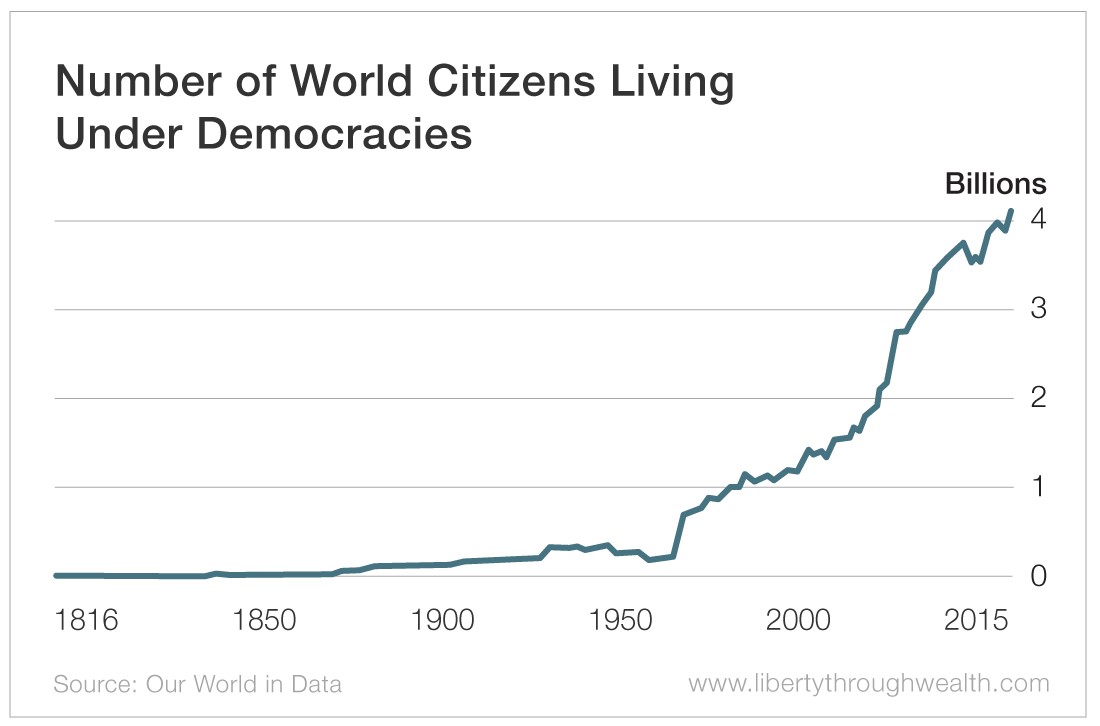
Life expectancy is rising.
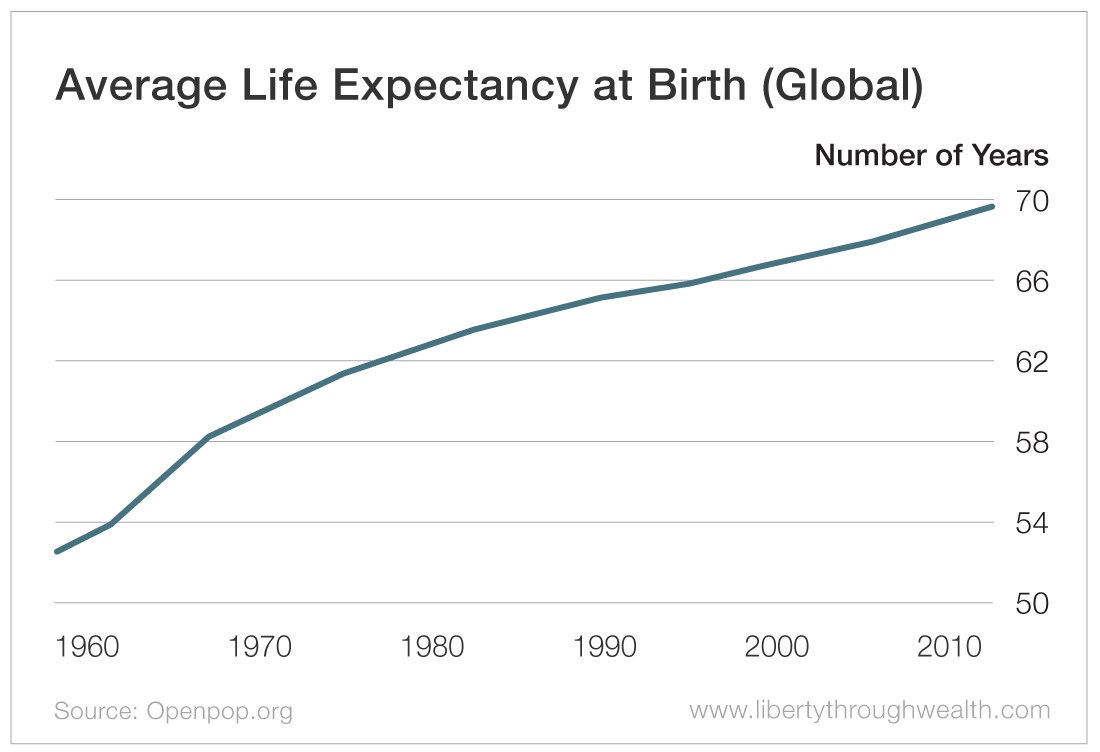
Educational attainment has never been greater.
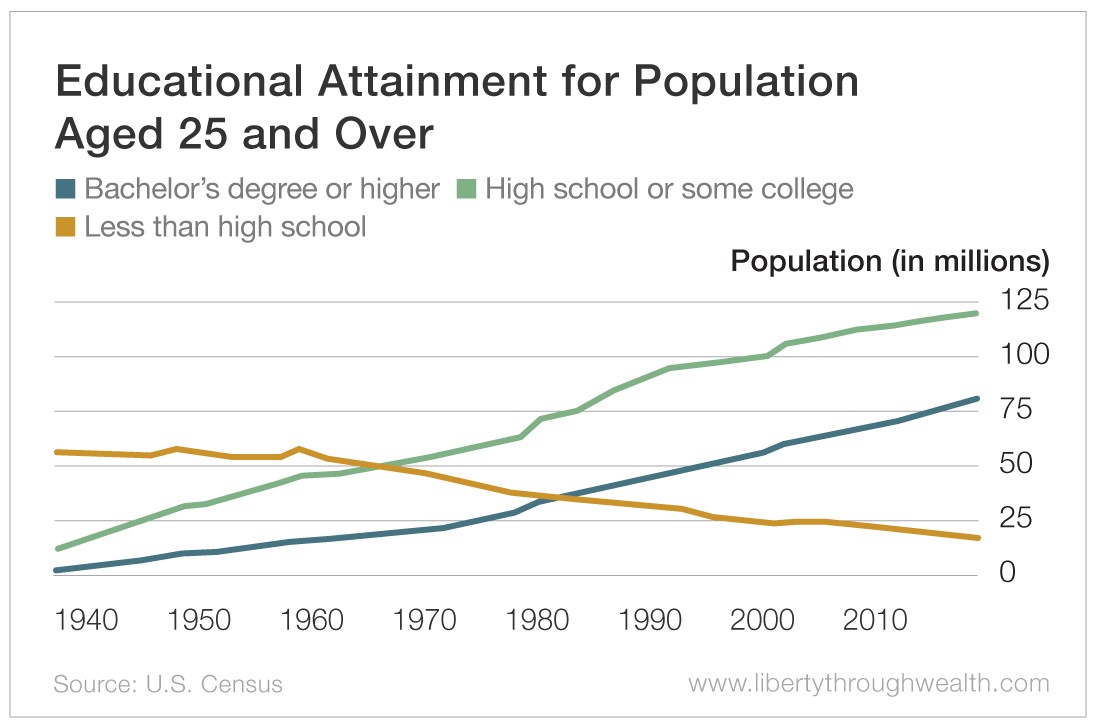
War between the “Great Powers” has been dropping steadily.
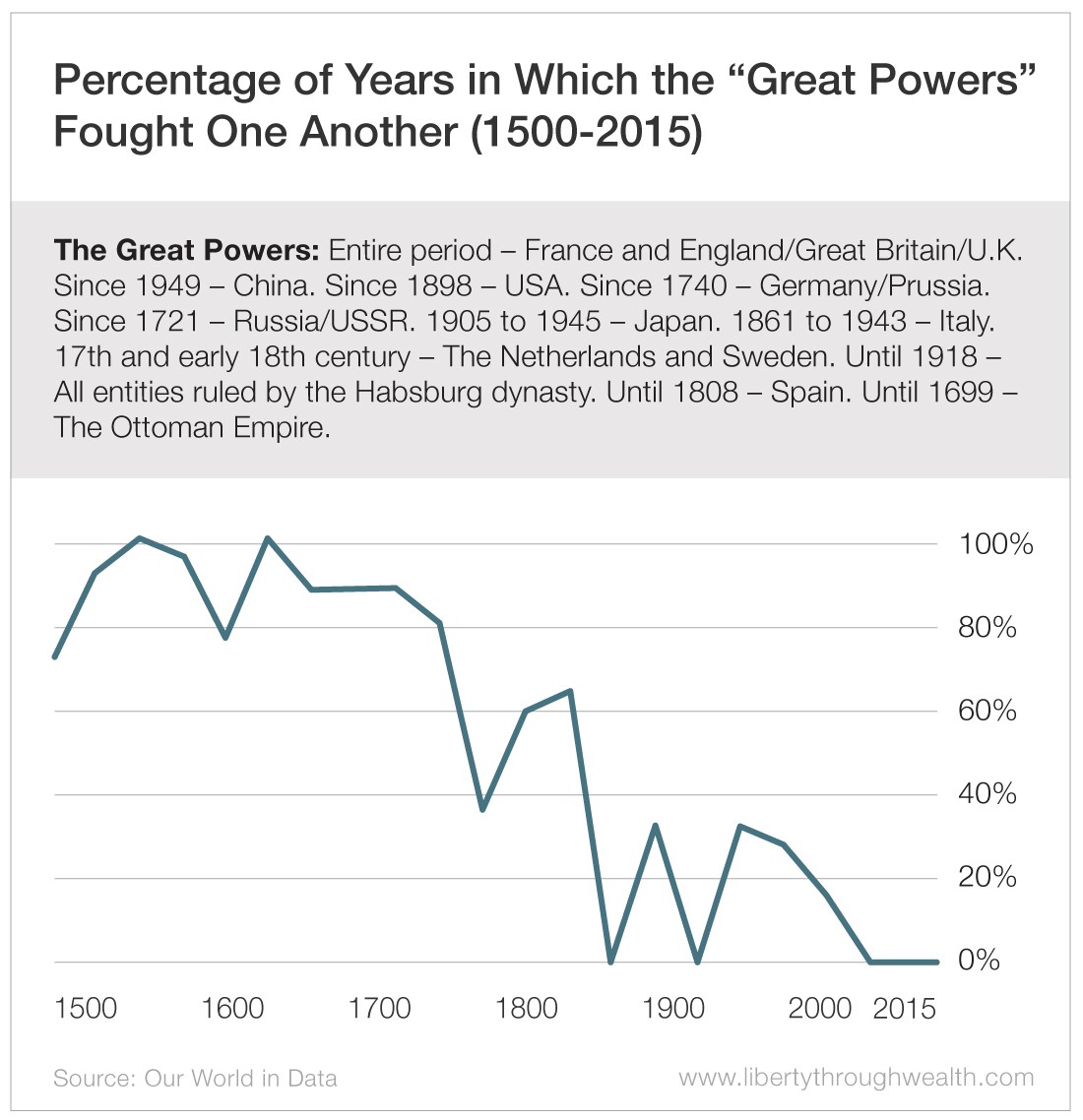
Violent crime is falling.
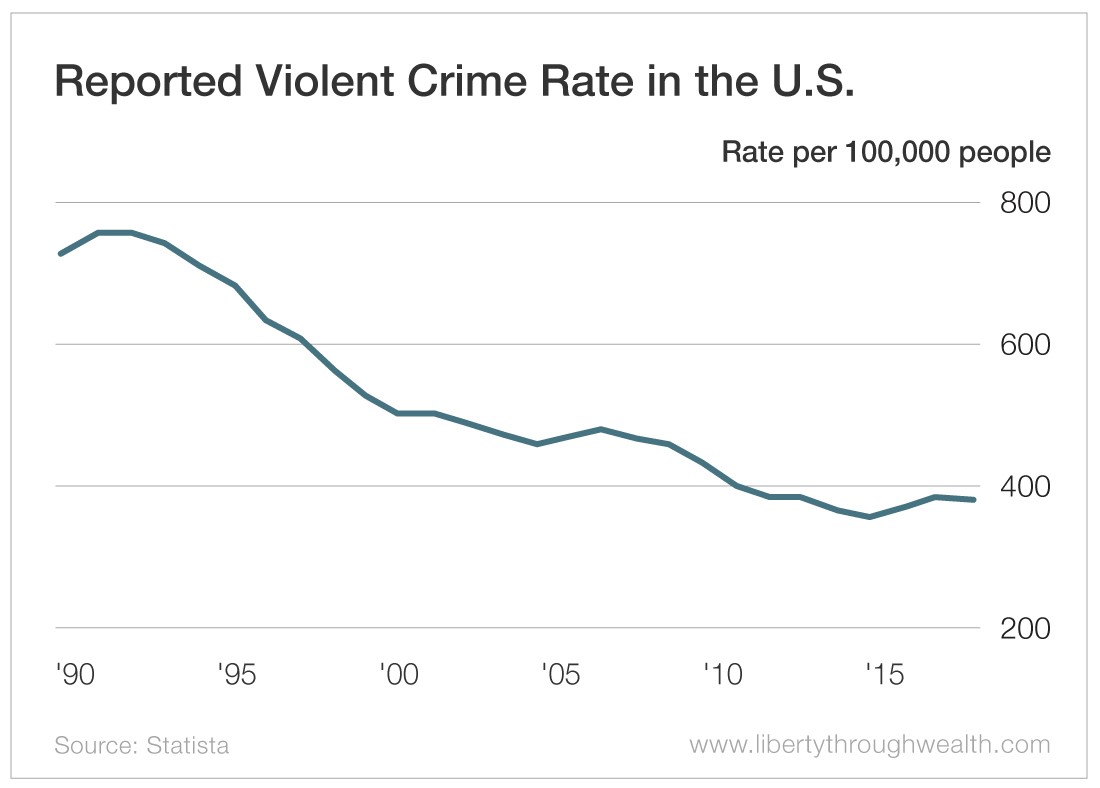
Air quality is improving.
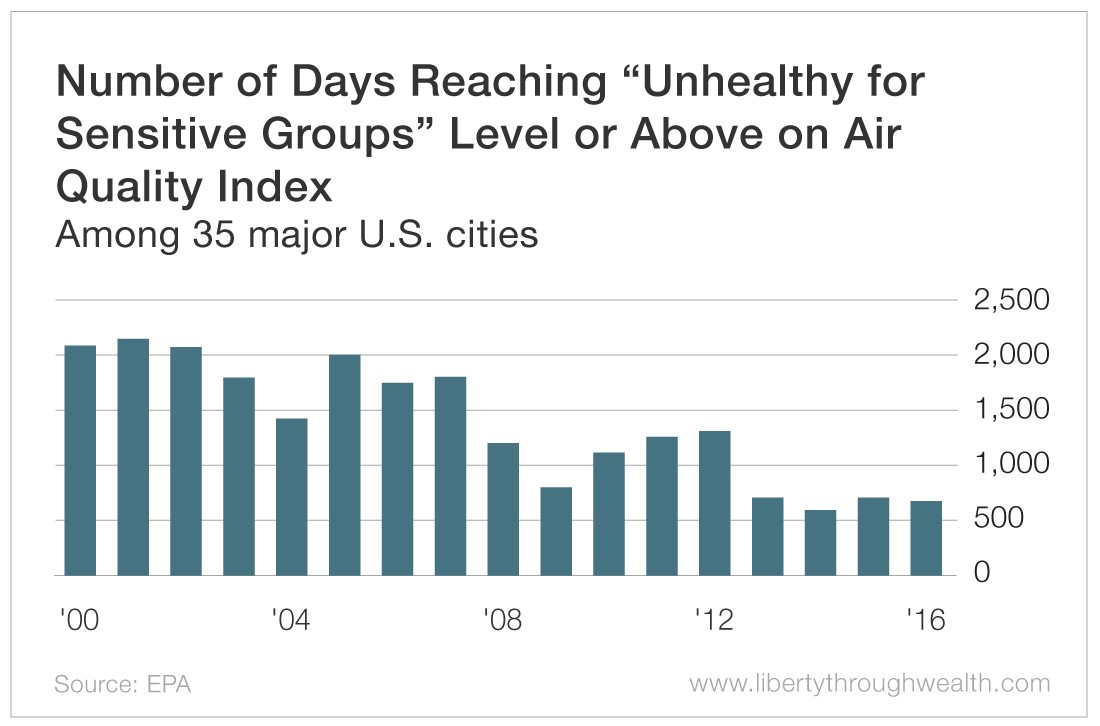
And here are a few charts that will be of particular interest to investors…
This is the trend in U.S. GDP growth.
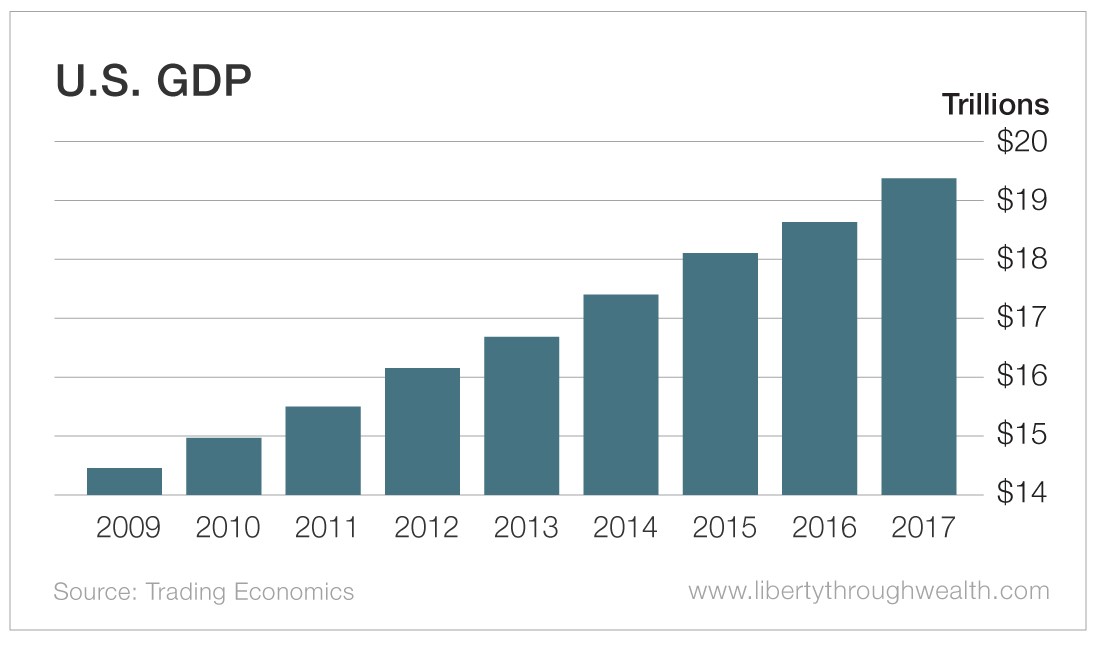
Notice the direction of U.S. corporate profits.
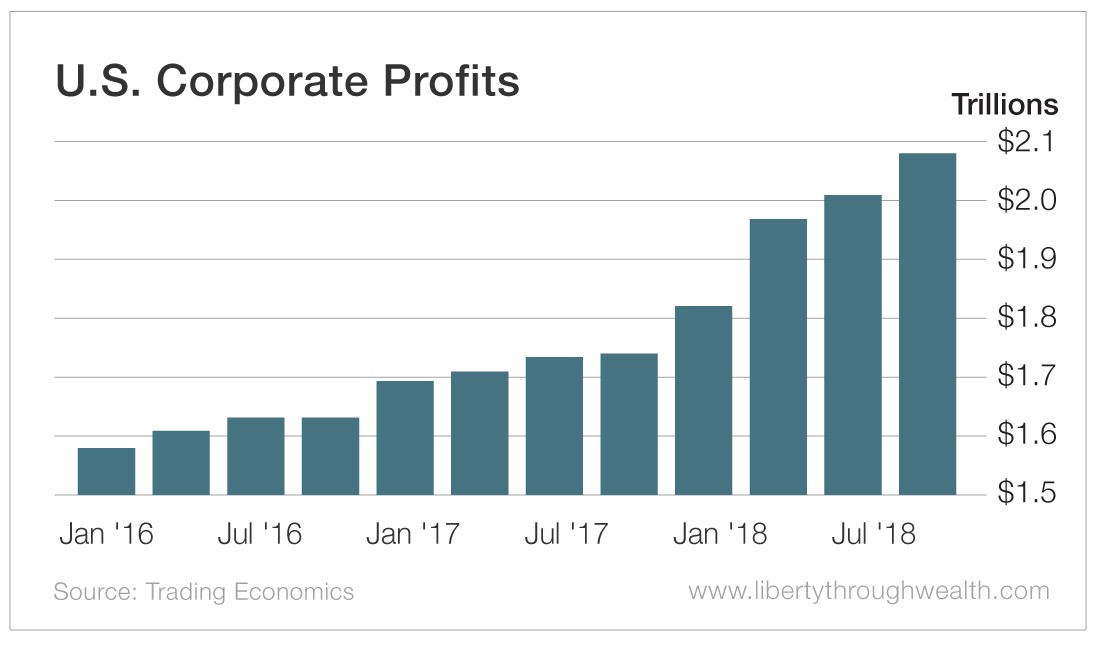
Here is the inflation-adjusted median income in the U.S.
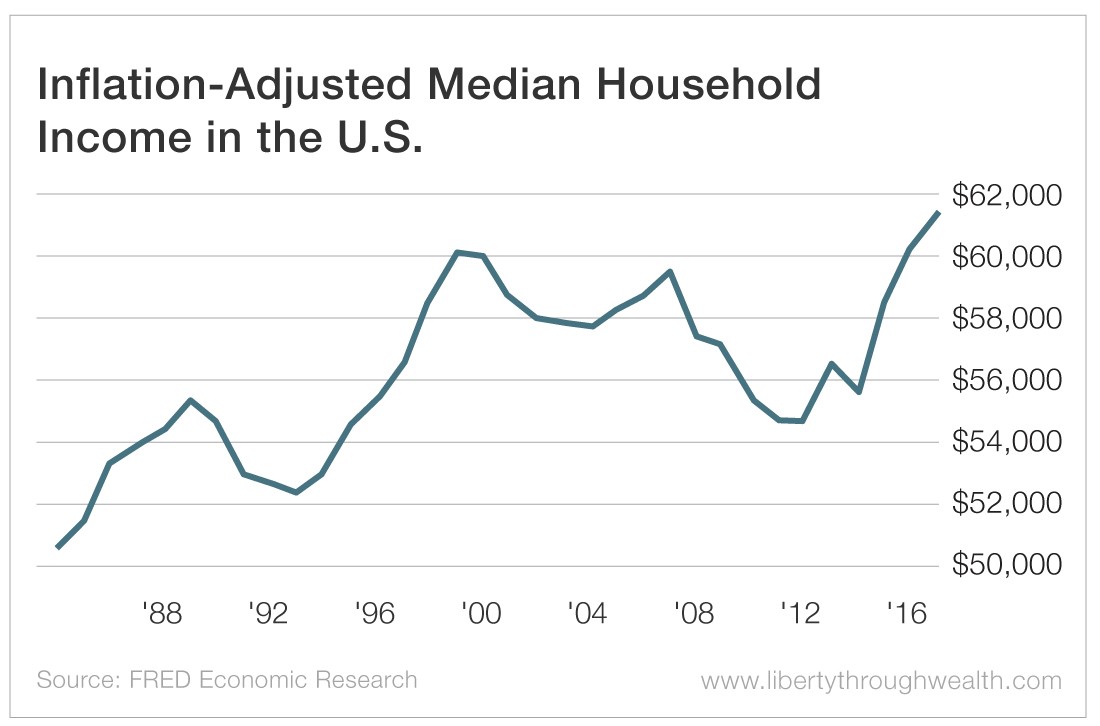
This is the trend line in U.S. household net worth.
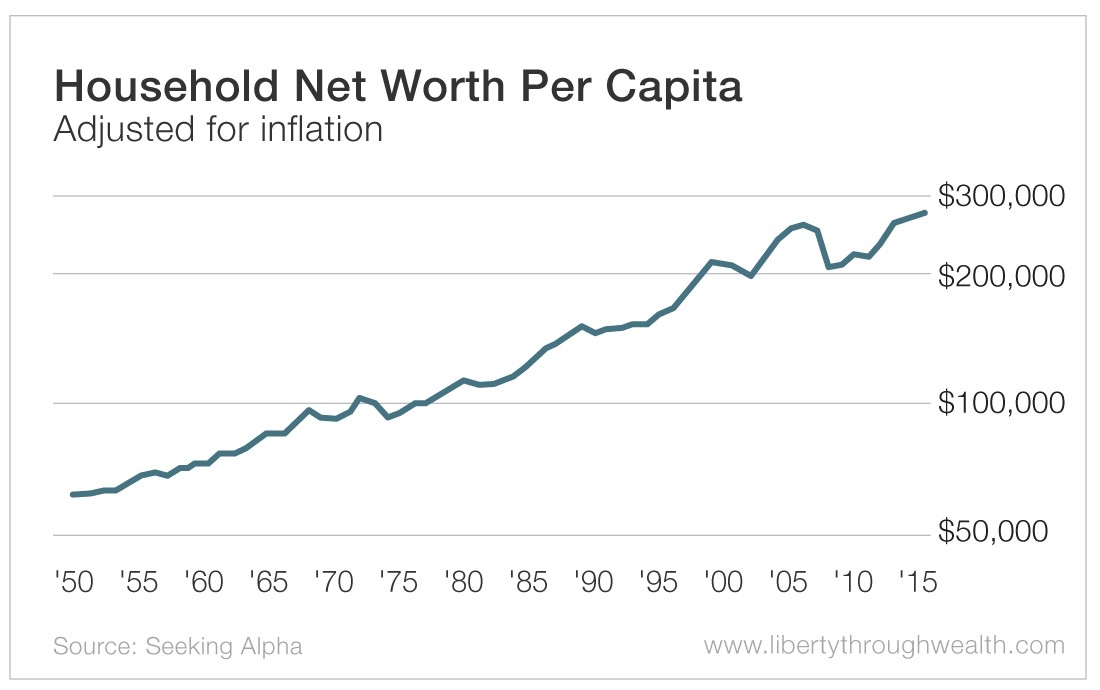
And here is a long-term chart of the S&P 500. It also shows an unmistakable trend.
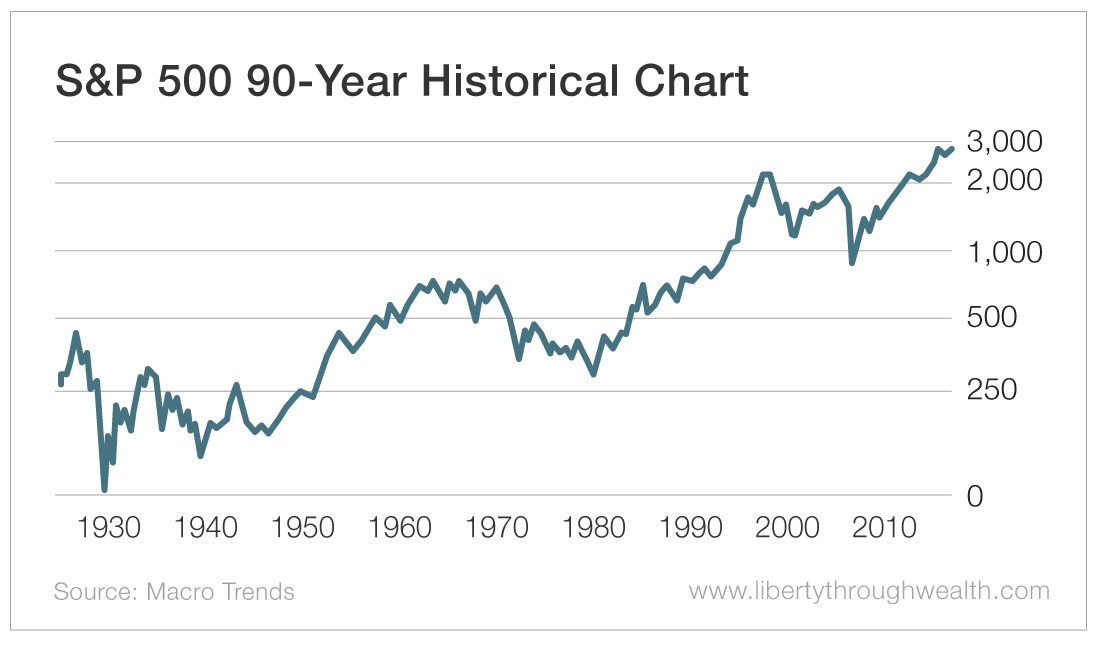
Don’t get me wrong. I’m not suggesting that everything is getting better for every person in every way.
I’m not saying nothing was better in the past. (Popular music comes immediately to mind.) I’m not saying everything will be better in the future.
And I’m not suggesting that we don’t face a number of difficult problems. We do.
However, here are a few important takeaways:
- Media stories, anecdotes and headlines are not necessarily accurate, objective or contextual.
- A “fact” – true or not – does not make a trend.
- Just because something isn’t perfect today doesn’t mean that it was better in the past or won’t be improved in the future.
- What some people call “problems” or “crises” are often opportunities in disguise.
- Human beings, technology and capital markets operate today as a comprehensive problem-solving machine, improving our lives in almost every way imaginable: faster communications, more powerful computers, safer transportation, more lifesaving drugs and medical devices, and so on.
- There is no limit to the betterments we can attain if we apply knowledge, innovation and free markets to enhance human flourishing.
When I was speaking to a group the other day about how life is improving for most people in most places in most ways, one listener stridently objected.
“Who can say whether such a claim could even possibly be true?” he demanded.
I provided him with the succinct and eloquent answer that Harvard psychologist Steven Pinker gave in his book Enlightenment Now: The Case for Reason, Science, Humanism, and Progress:
It requires only the convictions that life is better than death, health is better than sickness, abundance is better than want, freedom is better than coercion, happiness is better than suffering, and knowledge is better than superstition and ignorance.
Good investing,
Alex
